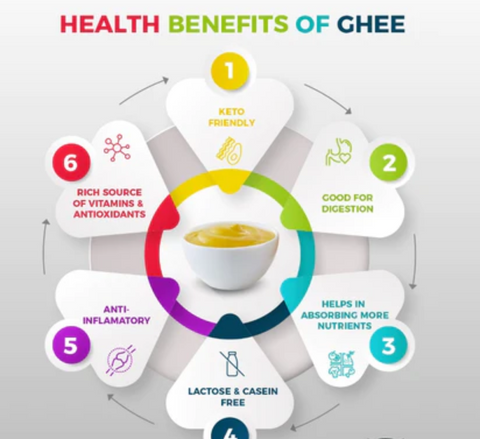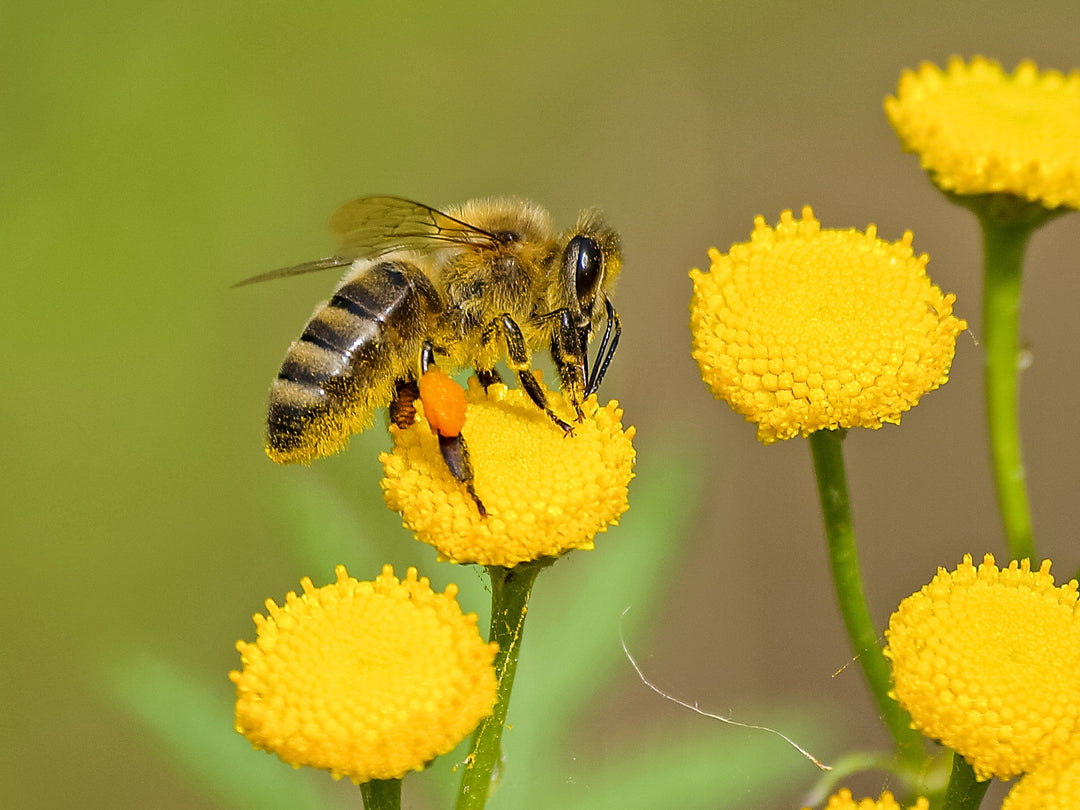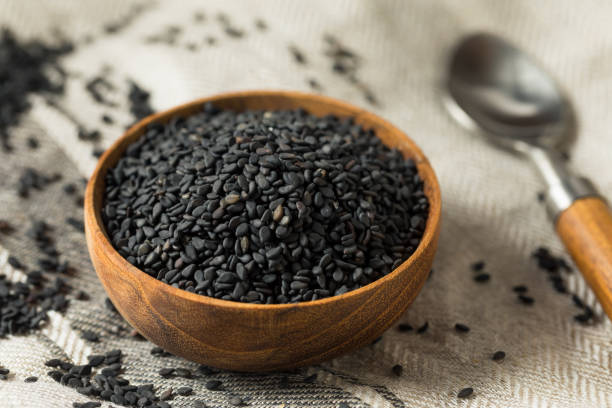Demystifying A2 Milk Ghee vs. A2 Milk Cultured Ghee
A2 Milk Cultured ghee vs A2 Milk ghee is the latest diet fix dairy sensitives often face these days. Modern dieticians are widely recommending cultured ghee in the diet because this wholesome dairy product is a nutritious food item that can wonderfully enhance the taste of a dish as well as it offers lots of health benefits.
If ghee itself is nutritious, then what is the relation of A2 milk cultured ghee with A2 milk ghee?
Let’s explore the difference and similarity A2 milk cultured ghee vs.A2 milk ghee by studying A2 milk cultured ghee vs. A2 milk ghee comparison.
What is ghee? A2 milk Cultured ghee vs. A2 milk ghee.
Ghee is the milky fat and it gets cooked from pure milk. For example, if we are talking about cow ghee, it is the milk fat of pure cow milk, and it is also known as clarified butter, brown butter, etc. Ghee is cooked from dairy butter, which is made from cow milk. Different types of ghee are prepared: cultured ghee is one of the popular ghee varieties, the world is quite enthusiastic about.
What is A2 milk cultured ghee and why it is unique?
As implied by the name, cultured ghee is cooked from cultured butter. In regular ghee, dairy butter is used as the raw ingredient, but in the cultured ghee making process, manufacturers use cultured butter.
Cultured ghee contains lactic acid instead of lactose of milk. Lactic acid is the X-factor of this ghee clarified butter that sets a huge difference for the users of cultured ghee.
The presence of lactic acid in cultured ghee is a boon for dairy sensitive consumers. Lactic acid prevents food sensitivity, which is mostly caused by the presence of lactose in this dairy staple.
Cultured ghee is rich in butyrate and that is why offers excellent therapeutic benefits for people suffering from constipation or irregular bowel movement, etc. Although there is no live culture in the dairy, it works as healthy as a probiotic.
Cultured ghee vs. ghee: is there any difference?
If we consider cultured ghee vs. ghee, both the products are ghee clarified butter, there is a line of difference between these two milk-made products. The raw materials are different, for example, clarified butter is made from dairy butter, but cultured ghee is made of cultured butter.
Normal or non-cultured ghee may have a high/mild aroma, but cultured ghee is always a high aroma product because of the impacts of fermentation. Other than the aroma, both the variety differs in taste too.
Non-cultured ghee is bland in taste and that is why it works as a first-class taste enhancer. Cultured ghee offers an intense buttery taste because of the fermentation process included in its manufacturing.
Both non-cultured and cultured ghee has long shelf-life, however, cultured ghee has a longer shelf life. You can store cultured ghee in the kitchen for a long without refrigeration support.
Concerning cultured ghee vs. ghee, the main difference lies in the ingredients. Cultured ghee is a zero lactose product, as it contains lactic acid only. If you are severely lactose intolerant, and you suffer from food sensitivity then cultured ghee is a better and safer option for you. The lactic acid of cultured ghee is a great savior for the food sensitivity problem.
Cultured ghee vs. ghee: The benefits of cultured ghee in the diet
- It is gut-friendly: Cultured ghee contains butyrate, and that makes it a gut-friendly food item. Add ghee in your diet, and you will find a solution from problems like constipation, irritable bowel syndrome, etc.
- It is helpful for natural weight loss: Cultured ghee contains health-friendly butyrate and Conjugated linoleic acid. Because of its large saturated fat content, ghee in the diet works as a filler food. As a cooking oil, it can control hunger pang and can restrict calorie intake. If you couple an active lifestyle with the ghee diet, it can help you in natural weight loss. However, you have to use ghee in moderation.
- Ghee is good for brain health: Cultured ghee is nutritious for brain health. A restricted amount of ghee in the diet helps in maintaining brain health. According to Indian Ayurveda, ghee in the diet helps in improving memory boost, prevents the risk of memory disorder diseases, etc. Ghee in the diet can help students with improved concentration as well as offers supports seniors in memory retention.
- It helps in smooth digestion: Cultured ghee is a digestion-friendly dairy. If you add it in the diet, it accelerates digestion and reduces the problem of high acidity, bloating, etc. The lactic acid in ghee helps in keeping the digestive system better functioning, and that proves supportive for maintaining good metabolism of the body.
- Ghee in diet takes care of better eyesight: Ghee helps maintain good eyesight. It contains Vitamin A, and that is a known supplement for eye care by aiding eye vision.
- Maintain the natural hydration level of the body: Pure cow ghee is a good quality natural moisturizer, and it helps in maintaining the hydration level of the body. It keeps the skin soft and internal tissues of the body soft and flexible.
- Maintains bone health:Pure cow ghee contains some amount of vitamin K that helps in the absorption of calcium from other foods in the body and aids in strengthening bones. A moderate quantity of ghee in the diet is good for maintaining resilient bones.

Cultured ghee vs. ghee.
If we compare cultured ghee vs. ghee, obviously cultured ghee is a better choice for lactose intolerants. It is more colon friendly and digestion-friendly. But people who are not dairy sensitive, organic grass-fed ghee is an excellent dietary choice for them.
If you are planning to add top-quality cultured ghee in your diet, you may count on Svastya 100% pure and grass-fed organic cultured ghee. The product is manufactured in India under a USFDA approved facility. Svastya organic farms cultured ghee is non-GMO and organic –certified ,India as well as and the USDA has endorsed the product for its 100% purity.
- Cultured Ghee has a more buttery taste as a result of fermentation of the cream. Many people prefer the taste and aroma of cultured foods.
- Batch-tested for traces of “dairy” (no more than 0.25% lactose and no more than 2.5 ppm casein/whey). This testing has not been done for our regular Ghee.
- Our traditional Cultured Ghee recipe has been used for thousands of years. The ancient tradition of Ayurveda considers Cultured Ghee important for strengthening Agni, our powerful digestive fire.
- Cultured Ghee is known as Desi Ghee in India, where the word desi means prepared with indigenous method.
The Fermentation Process
Milk contains lactose, a natural sugar which gives it that delicate sweet taste. In order for the body to breakdown lactose into its basic components of simple sugars called glucose and galactose, an enzyme called lactase must be present.
Many people lack this valuable enzyme in their digestive system, resulting in a common digestive problem known as lactose intolerance.
In order to metabolize lactose, lactase must always be present. During the culturing/fermentation process of milk or cream, lactose is converted into lactic acid. This makes for a much more digestible product for many people.
In the normal process of making ghee, the lactose is removed when the milk solids are separated from the fat. This means that normal non-cultured ghee does not usually cause a problem with lactose intolerance. However, cultured ghee is even better than regular ghee for those with lactose issues, as lactose is converted into lactic acid during fermentation process.
Milk From Pastured Cows
Cream Separated From The Milk
Cream Churned Into Butter
Butter Simmered And Filtered To Make Ghee
Milk From Pastured Cows
Cream Separated From The Milk
Cream Fermented Into Yogurt
Yogurt Churned Into Cultured Butter
Cultured Butter Simmered And Filtered To Make Cultured Ghee

Batch-Tested For Traces Of “Dairy” (No More Than 0.25% Lactose And No More Than 2.5 Ppm Casein/Whey)




